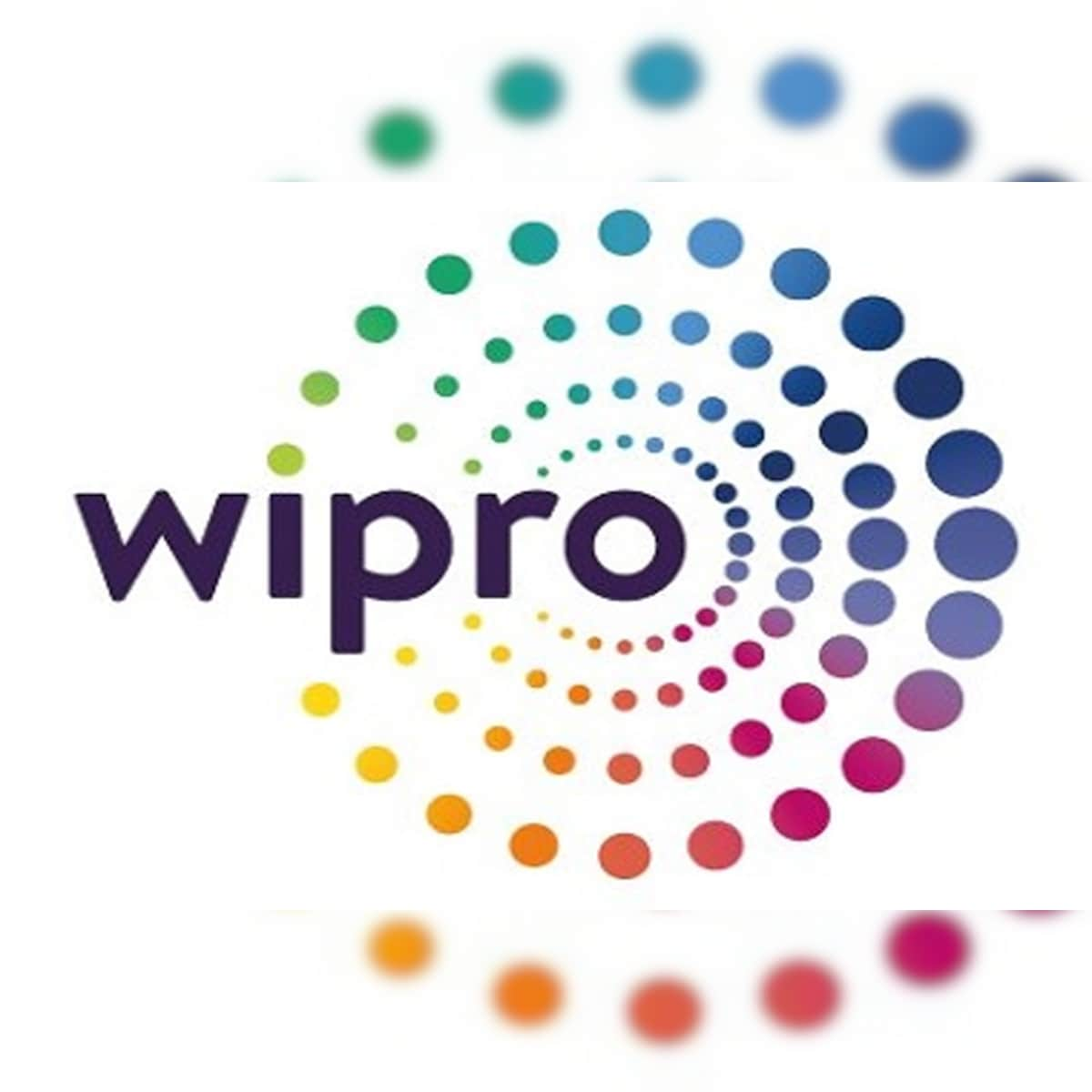Wipro Limited is a well-known multinational IT, consulting, and business process services company (NYSE: WIT, BSE: 507685, NSE: WIPRO). Wipro assists its clients in successfully adapting to the digital environment by utilizing cognitive computing, hyper-automation, robots, cloud, analytics, and emerging technologies. It has over 200,000 dedicated people who serve clients on six continents and is globally popular for its broad range of services, a solid commitment to sustainability, and good corporate citizenship. They seek out individuals with fresh ideas. So, check out the frequently asked Wipro Interview Questions if you wish to land a job there.
- Eligibility Criteria
- Recruitment Process
- Wipro Interview Questions for Freshers and Experienced
- Conclusion
A career with Wipro allows you to reach your full potential, make regular advancements, and work on cutting-edge technology alongside some of the industry’s greatest minds. Wipro is an exciting place to work because of its inspiring mix of growth opportunities, continuing innovation, fair play, and positive work culture. Wipro’s capacity to provide every employee the flexibility to study, progress, and chart their career path identifies it as a boundary-less organization. Wipro thinks that people and their inventive expertise are the best way to achieve corporate efficiency.
Therefore, if you have a strong desire to work with cutting-edge technology, Wipro is the place for you.
Have a look at our compilation of Wipro interview questions and answers that will help you ace the interview smoothly.
So, let’s start, shall we?

Wipro Eligibility Criteria
- Candidates must have a B.E./B.Tech degree or a 5-year integrated M.Tech degree.
- All branches, with the exception of Fashion Technology, Textile Engineering, Agriculture, and Food Technology, are eligible to participate in the recruiting process.
- There should be no current backlogs.
- 3 or less than 3 years of education gap is allowed (10th to graduation).
- In tenth and twelfth grades, you must have a grade point average of 60% or better.
- Graduation: 60% or 6.0 CGPA or equivalent, as determined by the standards of your university.
Wipro Recruitment Process
The Wipro Recruitment Process generally consists of 3rounds of selection:
Online assessment round
The initial stage in the hiring process is an online evaluation test. Candidates who clear this round will get an opportunity to appear for the technical interview rounds.
The online assessment is divided into three sections:
1. Aptitude
The Aptitude Test is the first milestone in the employment process at Wipro. This round is further divided into three sections:
- Quantitative Aptitude: This phase will assess the candidate’s mathematical ability. The Quantitative Aptitude component covers Time, Speed & Distance, Number Series, Simple & Compound Interest, Probability, Permutation & Combination, Ratios & Proportions, and Percentages.
- Logical Reasoning: This section will examine the candidate’s critical and logical thinking skills. In this section, you will appear for a quiz on the following topics: Data Sufficiency, Data Interpretation, Data Arrangements, Logical Word Sequence, Statements and Inferences, Inequalities, Coding, Decoding, Series, Analogy and Visual Reasoning.
- Verbal Ability: This component will test the candidates’ command of the English language. The questions in this part will cover the following topics: Error-Spotting, Sentence Improvement, Sentence Completion, and Para-Jumbles, among others.
2. Essay writing
The writing section includes an Essay Writing test, which can be based on any topic or event. Candidates must produce an essay of 200-400 words on the chosen topic. It is also a computer-based test. So, to write an excellent Wirpo essay, one should have knowledge of proper essay structure, exceptional writing skills, proper wording (grammar, punctuation, and spelling problems), and a strong vocabulary.
3. Coding
Candidates may take the coding exam in any programming languages listed below: Java, C, C++, or Python. Strong programming fundamentals in at least one programming language of the student’s choosing will come in handy. So, in this round, two or three code questions may come up. The topics that you should focus on are as follows: Decision Making, Looping, Functions, Arrays, and Strings are examples of programming concepts.
*NOTE: Based on the company’s needs and job descriptions, experienced candidates may be exempt from the online evaluation step.
Technical Interview Round
- Following successful completion of the online exam, your technical skills are evaluated in the technical interview round, which is generally connected to the technical knowledge necessary for the post for which you have applied. Your problem-solving and numerical thinking abilities will be put to the test in these problems.
- The most vital phase in the procedure is the technical face-to-face interview. You should understand and be able to describe computer concepts such as OOPS, DBMS, CN, OS, and so on to the interviewer. It is important to have knowledge of at least one programming language.
- You may have to write code as well. The interviewer will also examine your problem-solving abilities. You’ll be questioned about your prior projects and professional experiences, including what you did, how you used technology, and how successful you were.
- The number of technical interviews scheduled will be determined by your performance in previous rounds, job description, and corporate requirements.
HR Interview Round
Following the completion of the technical round, every firm performs an HR interview round to examine your personality, strengths, weaknesses, and ability to manage the work and assess your background and determine whether you’re the best match for this position.
They can also inquire about Wipro’s history, such as when the company was founded, its aims, beliefs, and organizational structure, among other things. If you’re preparing for an HR round, you can presume to be asked some of the below questions:
- Please tell me a bit about yourself. (This is the opening question, and it will probably be asked throughout each interview round. This question is best answered by telling the interviewer about your interests, skill sets, strengths, credentials, projects, and triumphs. Begin with your present position, achievements, job background, and personal information.)
- What are your expectations concerning this role?
- Why do you wish to join Wipro?
- Reason for a job change?
Wipro Interview Questions for Freshers and Experienced
1. What are the functionalities of an operating system?
The following are some of the essential features of an operating system:
- The operating system allows diverse programmes and peripheral devices to share the computer’s memory and central processing unit time.
- A user interface (UI), such as a graphical user interface (GUI) or a command line (CL), is provided by an operating system (OS).
- A computer’s operating system offers features for starting it up.
- Manage the peripheral devices and do some basic activities.
- It facilitates file management, which is the process by which an operating system stores, retrieves, manipulates, and saves data.
2. What is the difference between UNIQUE key and PRIMARY key constraints?
Difference between unique key and primary key constraints:
| Unique key | Primary key |
| Multiple unique keys can be found in a table. | There can only be one main key in a table. |
| The use of NULL values is permitted. | There are no NULL values allowed. |
| It aids in the preservation of unique data in a table column. | It aids in the identification of a unique row in a table. |
| A unique constraint in MS SQL server databases generates a unique NON-CLUSTERED INDEX. | A unique CLUSTERED INDEX will be generated using the primary key. |
3. Define the SQL Profiler?
SQL Profiler is a profiler utility primarily used to track SQL Server connections and determine actions such as which SQL Scripts are running and which are failing, among other things.
4. What is stored procedure?
A stored procedure is a collection of SQL statements that can be run in various ways. Most database management systems support stored procedures, but not all of them. The stored process improves reusability by storing the code or procedure in the system and using it repeatedly, making work more accessible.
5. What is a process and what is a thread?
A thread is the slightest and minuscule processing unit, a lightweight sub-process, and a discrete execution path.
Threads are self-contained, which implies that if one thread fails, it has no impact on the others. It takes advantage of shared memory space.
The procedure is time-consuming and can involve numerous threads, and it’s only a tiny portion of a more extensive program.
6. What are the advantages of a thread? How does the multithreading look like?
These are the following advantages of a Thread:
- It allows for effective communication.
- It reduces the amount of time it takes to switch between contexts.
- We can get concurrency within a process by using thread.
- Thread enables multiprocessor systems to be used at a larger scale and with greater efficiency.
- Multithreading is a process that runs many threads at the same time.
- A thread is the slightest and minuscule unit of processing and is a lightweight sub-process.
7. What are Multi-Processing and Multitasking?
- Multitasking: Multiple jobs run on a single CPU, as the name implies. To get the most of the CPU, we use multitasking.
- Multitasking can be done in two ways:
- Process-based Multitasking (Multiprocessing)
- Thread-based Multitasking (Multithreading)
- Multi-processing: It describes a system’s ability to sustain several central processing units at the same time.
- Multithreading: As the name implies, several threads are active at the same time.
- A thread is a lightweight sub-process, the smallest unit of processing.
8. What are the differences between an object-oriented programming language and object-based programming language?
The main distinctions between object-oriented and object-based languages are as follows:
- All Object Oriented Programming ideas are adhered to by object-oriented languages, but not all Object Oriented Programming concepts are adhered to by object-based languages, such as inheritance, polymorphism, and so on.
- Object-oriented languages have no built-in objects, but object-based languages have them. JavaScript, for example, has a built-in window object.
Object-oriented programming languages include Java, C#, Smalltalk, and others, whereas object-based languages include JavaScript, VBScript, etc.
9. What are the differences between error and exception in Java?
| Errors | Exceptions |
|---|---|
| It is impossible to recover from a compilation or execution fault. | A try-catch block or the throw keyword can be used to recover from exceptions. |
| All mistakes in Java are of the unchecked kind. | For both checked and unchecked types, there are exceptions. |
| The most prevalent cause of mistakes is the environment in which the code is running. | The program itself throws exceptions. |
| Both at compilation and run time, errors might occur.Compile Time: eg Syntax ErrorRun Time: Logical Error | All exceptions arise during the execution of the program. |
| The Java.lang.error package file defines errors. | The Java.lang package defines exceptions. Exceptional bundle |
| Examples : java.lang.StackOverflowError, java.lang.OutOfMemoryError | Examples : Checked Exceptions : SQLException, IOException Unchecked Exceptions : ArrayIndexOutOfBoundException, NullPointerException, ArithmeticException. |
10. Differentiate between strings and char arrays in Java.
| Strings | Character Arrays |
|---|---|
| A string is a collection of characters represented as a single data type in sequential order. | A Character Array is a sequenced array of char data types. |
| Strings are immutable, which means that you can’t change the data or state of a String object after it’s been formed; instead, a new String object is constructed. | Character Arrays are changeable, which means they can have their contents altered. |
| Built-in functions like substring() and charAt() can be used with strings. | There are no built-in functions in Java that deal with Character Arrays. |
| The ‘+’ operator can be used to create a new string by joining two strings together. | It is not feasible to append two Character Arrays using ‘+’. |
| To retrieve characters in a String at a given index, use the charAt() method. | In the same way that [] may be used to access the characters in a Character Array in any other language, it can also be used to access the characters in a Character Array. |
| Strings can be saved in memory in a variety of ways. | Character Array elements are stored in increasing memory locations in sequential order. |
| All Strings are stored in the String Constant Pool. | All Character Arrays are stored on the Heap. |
| The String class’s toCharArray() function can be used to convert a String to a Character Array.Eg: String s = “GEEKS”;char [] ch = s.toCharArray();The code above converts a string into a char array. | To convert a Character Array to a String, utilize a String Constructor.Eg: char[] a = {‘G’, ‘E’, ‘E’, ‘K’, ‘S’};String A = new String(a);The code above converts a char array into a string. |
11. Explain precondition and postcondition to a member function in the context of C++ programming language.
A precondition is a requirement that must be met before calling a member function. A class is utilized appropriately if preconditions are never false. The following function is not performed if a precondition fails to hold. Before inserting an element into a stack, for example, we call isfull() to see if the stack is full. A precondition, in this case, is the isfull() function.
If the precondition was true when the member function was entered, the postcondition must be true when the function is exited. The postconditions must never be false for a code to be correctly implemented. For example, we know that after adding an element to the stack, isempty() must always hold.
12. What do you understand about Stack Unwinding in C++?
Removing function entries from the function call stack during runtime is known as stack unwinding. Stack Unwinding is frequently related to Exception Handling. When an exception occurs in C++, the function call stack is searched linearly for the exception handler, and any entries before the function with the exception handler are removed. Stack unwinding is required if the exception is not handled in the same code (where it is thrown).
13. Explain free() vs delete () in C++.
Both delete() and free() are used to deallocate memory dynamically.
- The keyword “delete” is a C++ keyword, whereas the free() function is a C library function that can also be used in C++.
- The delete operator deletes a NULL pointer or a pointer allocated with the new operator, whereas the free() function deletes a NULL pointer or a pointer allocated with the malloc(), calloc(), or realloc() procedures.
- When the delete operator in C++ eliminates the allocated memory, it calls the class’s destructor, but the free() method does not; it just frees the memory from the heap.
14. What are the Different Objects in DBMS?
Different types of objects in DBMS are:
- View: This object is used to make a database view. It’s a logical table that’s based on a different view. The base table is the table on which the view is built.
- Table: The CREATE TABLE statement can be used to create a table in a database.
- Sequence: This object command is used to build a database sequence. It’s a database item that’s been created by a user and shared by multiple users in order to generate unique integers.
- Index: A database object can use an index to create indexes in the database. Indexes are used to retrieve rows from a table quickly.
- Synonym: This object is also used to create database indexes. You can quickly retrieve the items using synonyms.
15. Define memory management in C.
When you run a program, it loads into memory on your computer and begins to run by sending and receiving instructions from the processor. When your program has to run a function, it loads it in a different memory region until it completes the task then releases it.
Now, discuss the concept of dynamic memory allocation in the C programming language, which allows C programmers to allocate memory at runtime. Four functions in the stdlib.h header file allows for dynamic memory allocation in the C language.
- malloc()
- calloc()
- realloc()
- free()
16. What are the steps involved in designing complete software?
A programmer needs to follow the SDLC when creating software.
The software development life cycle describes the steps involved in creating new software.
SDLC consists of 6 steps:
- Planning: Consider the scope, methodology, and features, among other things.
- Gather the necessary tools, data, and information for the project through a requirement analysis.
- Designing: Create a prototype to test the project’s architecture.
- Coding: Coding in accordance with the design.
- Testing:Testing is done to see if the actual result matches the desired outcome.
- Updating and maintenance
17. What is the difference between Abstract classes and interface?
The keyword “implements” should be used to implement a Java interface, while the keyword “extends” should be used to extend a Java abstract class.
An Interface can only extend interfaces; an Abstract class has two properties: it can only extend one Java class yet implement many interfaces simultaneously.
18. What is the property of a class?
Property can be defined as a member of a class that allows an object or a class to access an attribute. The length of a string, the size of a typeface, the caption of a window, the name of a customer, and so on are all examples of properties.
19. Define precondition and postcondition to a member function.
A precondition is a need that must be met before a method may be used.
A postcondition is a requirement that must be met after a method has been completed.
If all of this method’s preconditions are met, the postconditions will also be met.
If the preconditions are not met, there is no guarantee of behavior.
20. How can you sort the elements of an array in descending order?
Sort the elements of an array in descending order with a C program.
#include<stdio.h>
include<conio.h>
void main ()
{
int num[30];
int i, j, a, m;
printf("Enter the value of Nn");
scanf("%d", &m);
printf("Enter the numbers n");
for (i = 0; i < m; ++i)
scanf("%d", &num[i]);
/* sorting begins ... */
for (i = 0; i < m; ++i)
{
for (j = i + 1; j < m; ++j)
{
if (num[i] < num[j])
{
a = num[i];
num[i] = num[j];
num[j] = a;
}
}
}
printf("Descending order of the elements n");
for (i = 0; i < m; ++i)
{
printf("%dn", num[i]);
}
} 21. Write a program to sort the string by using bubble sort.
Bubble sort: Bubble sorting is printing an array’s elements in ascending or descending order. Bubble sort can also be used to sort string.
Program to sort the string:
#include <stdio.h>
#include <string.h>
void main()
{
int num, i, j;
char name[15][20], temp[20];
printf("n Sorts the strings of an array using bubble sort :n");
printf("Number of strings :");
scanf("%d", &num);
printf("Input string %d :n", num);
for(i=0;i<=num; i++)
{
fgets(name[i], sizeof name, stdin);
}
for(i=1;i<=num;i++)
for(j=0;j<=num-i;j++)
if(strcmp(name[j],name[j+1])>0)
{
strcpy(temp,name[j]);
strcpy(name[j],name[j+1]);
strcpy(name[j+1],temp);
}
printf("The strings appears after sorting :n");
for(i=0;i<=num;i++)
printf("%sn",name[i]);
} 22. Write code in C to print “hello world” without using a semicolon
#include<conio.h>
#include<stdio.h>
void main()
{
if(printf("hello world"))
{
}
} Output:
hello world
23. Write a program to find factorial of a number.
#include<conio.h>
#include<stdio.h>
Void main()
{
int i, fact=1, num;
clrscr();
printf("Enter the number for which you want to find factorialn");
scanf("%d", &num);
for(i=1;i<=num; i++)
{
fact=fact*i;
}
printf("Factorial of %d is : %d",num,f);
return 0;
} 24. Write a C program for Fibonacci series.
#include<stdio.h>
#include<conio.h>
int main()
{
int n1=0,n2=1,n3,i,number;
printf("Enter the number of elements:");
scanf("%d",&number);
printf("n%d %d",n1,n2); //printing 0 and 1
for(i=2;i<number;++i) //loop starts from 2 because 0 and 1 are already printed
{
n3=n1+n2;
printf(" %d",n3);
n1=n2;
n2=n3;
}
return 0;
} 25. What is the logic behind reverse of a string in Java?
The reverse of a string:
import java.util.*;
class ReverseString
{
public static void main(String parvez[])
{
String original, reverse= " ";
Scanner in=new scanner(system.in);
System.out.println("Enter the string: ");
original= in.nextLine();
int length=original.Length();
for(i=length-1;i>=0;i--)
reverse=reverse+original.charAt(i);
System.out.println("Reversed string: " +reverse);
}
} Output:
Enter the string: parvez
Reverse string: zevrap
26. Name the operators that cannot be overloaded.
- Scope Resolution operator (::)
- Pointer-to-member Operator (.*)
- Member Access or Dot Operator (.)
- Ternary or conditional operator (?:)
- Object size Operator (sizeof)
- Object type operator (typeid)
27. What is polymorphism?
Polymorphism is a feature of object-oriented programming languages that means one name has several variants.
We might say polymorphism behaves differently depending on the situation.
Polymorphism can be divided into 2 categories.
- Compile time polymorphism: Also, it is known as method overloading.
- Runtime polymorphism: Also, it is known as method overriding.
28. How is C++ struct different from C++ class?
A bundle is a struct, and it’s a collection of relevant pieces that must work together in a specific situation. For example, the context limits the number of parameters it can provide to a function.
If no access modifier is specified, the members’ visibility (public, private, or protected) will be public in the struct and private in the class.
By default, visibility extends a little farther than members: if you don’t specify anything for an inheritance, the struct will inherit publicly from its base class, while the class will inherit privately.
29. What is DOM?
The Document Object Model (DOM) is an acronym for Document Object Model, and it is an HTML and XML document programming API. The DOM defines the document’s logical structure and how it is accessed and altered.
DOM represents a table in a hierarchical structure.
30. What are the benefits of Hybrid Clouds in Cloud Computing?
A hybrid cloud is Cloud Computing, storage, and service environment that mixes on-premises infrastructure, private cloud services, and a public cloud (like Amazon Web Services (AWS) or Microsoft Azure) with platform orchestration. Your cloud server integrates public clouds, on-premises computing, and private clouds in a hybrid cloud infrastructure.
The true value of cloud services lies in their ability to enable rapid change in a digital firm. Every technology management organization has two agendas: the IT and business transformation agendas. The IT plan mostly always focuses on cost-cutting. Plans for digital business transformation, on the other hand, focus on generating revenue through investments.
The flexibility of a hybrid cloud is its primary benefit. Your firm may want (or need) to connect public clouds, private clouds, and on-premises resources to gain the agility it needs for a competitive advantage.
Conclusion
So, we hope you found these Wipro Interview Questions and Answers informative and helpful for your preparations for the interview.
Remember that while no one can predict the interviewer’s questions, preparation is essential to land a job in your dream company.
Start upskilling and reskilling yourself to steer your career towards success with certified online courses and degrees from world-class universities at Great Learning.







